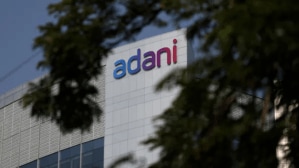Theatre of war
A bunker at the entrance, sandbags in place of ticket windows and a gun peeping out from a window. Smita Aggarwal watches Fanaa in Srinagar’s only functional theatre

A Trip to a cinema hall in India usually means a three-hour break from the real troubles of everyday life. In Srinagar it merely reinforces them.
Srinagar has just one movie hall—Neelam—and even that looks more like a war movie set than a place of entertainment. Nine months ago, fidayeens stormed this theatre, killing a militant and injuring a constable. Security at Neelam was immediately stepped up even though it had already been given protection by security forces since it was the first theatre that had defied militants’ threat and decided to screen Bollywood movies. Srinagar’s nine theatres all closed in 1990 after an order issued by militants.
in the years that have followed, watching a film in the darkness of a cinema hall has become a novel experience. There is a whole generation in the Valley that’s never experienced it.
THIS week Neelam is showing Fanaa. There are barricades all around. A security force man keeps a close watch from the hole of a bunker, the barrel of his gun sticking out ominously. The theatre is covered by long tin sheets. Spirals of barbed wire are spread all around, put up to prevent a suicide bomber from coming in.
The list of dissimilarities between Neelam and other theatres in the country is endless. Neelam doesn’t even advertise its releases. There is just one film hoarding. ‘‘Those days (before 1989) I used to make 70-80 film hoardings in a day,’’ remembers 50-year-old Abdul Rashid, a painter. ‘‘I had a staff of 4-5 painters. But now everybody has taken to different jobs.’’ Rashid’s workload has decreased to two days in a week now.
I make my way through the makeshift narrow entrance. The security guard asks me to stop. A woman guard appears and directs me to step inside a cabin for a security check. Checking over, I move ahead.
There is no ticket window. Instead, there are sandbags lined along the entrance hall blocking the way to what was once a ticket window. As I look up the tired, aging building, a gun peeps out from the first floor window.
The manager here doubles as a ticket seller. Just a few minutes ago, he had been fixing posters of the next movie to be screened. ‘‘The cinema cannot afford to keep a huge work force now,’’ he says. Owning a theatre is a huge liability and so he has rented it out to Yash Raj Films.
‘‘There used to be time when the hall used to be houseful. People would throng cinema halls,’’ says Ali Mohammad Nagoo, who once sold tickets at the Pladium Cinema which was gutted during an encounter between the security forces and militants. ‘‘I clearly remember a Rs 8 ticket for Pakeezah being sold for Rs 60-70 in black at Shiraz Cinema. For Raj Kapoor’s Bobby, a Rs 1.50 ticket was sold for Rs 30-40. And the girls sat in 3rd class on bench to see this movie.’’
His face brightens as he recounts the old good times when people would wait in long queues outside Pladium.
At present, the average daily turnout at the Neelam is 100 to 150.
TODAY, there are only a few families in the hall. The audience is mainly made up of single young men. There are only three-odd couples who have taken the risk of coming here.
Fanaa, set against the backdrop of Kashmir, opens with a shot of the beautiful Kashmiri landscape. ‘‘Shikara, Shikara,’’ two children shout.It’s a moment of identification.






- 01
- 02
- 03
- 04
- 05

























